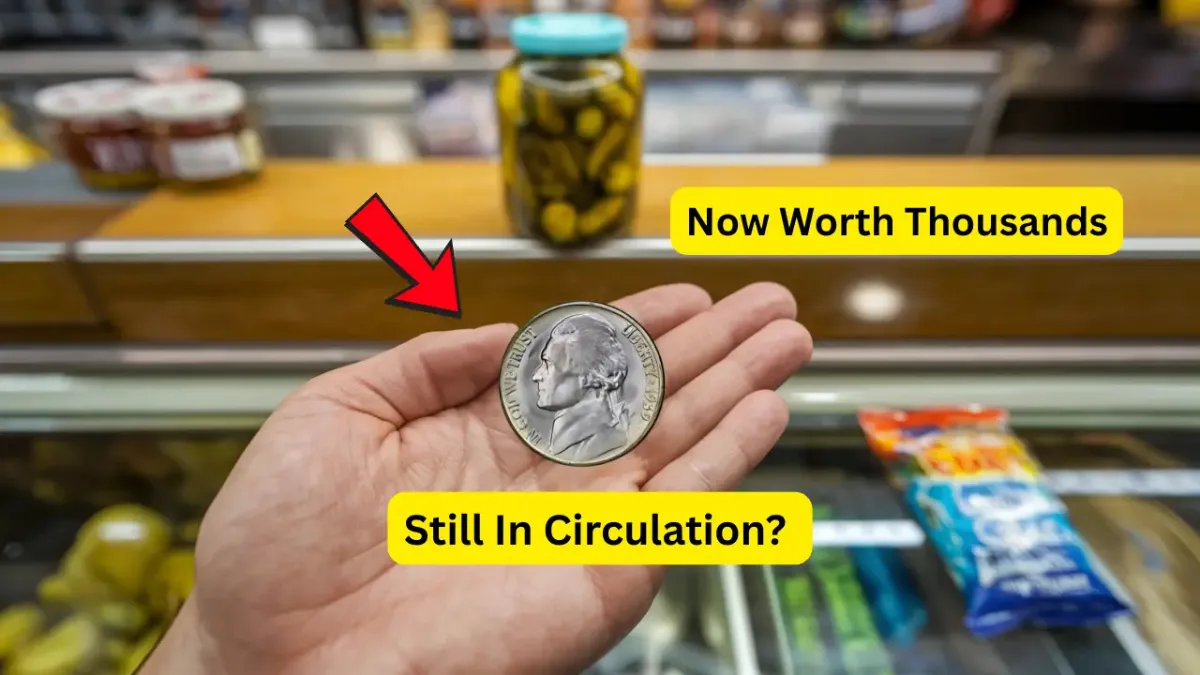In a Surprising Twist for Everyday Coin Holders
Coin collectors and everyday spenders alike are being urged to check their spare change more carefully. A rare version of the Jefferson nickel, which contains a double die error—a minting mistake made during production—has reportedly been found in regular circulation.
This common five-cent coin, which was originally created for ordinary transactions, could now be worth thousands to collectors who know what to look for.
What Is a Double Die Error?
To most people, a Jefferson nickel with a double die error might just look a bit off. But to numismatists, it’s a valuable rarity. This kind of error happens when the coin die, the machine used to stamp the design onto the coin, moves slightly between strikes.
This causes a noticeable doubling effect, especially visible in key areas like the date, the word “LIBERTY,” and the motto “IN GOD WE TRUST” on the front side of the coin. These doubled features are the giveaway signs of a potentially high-value coin.
Jefferson-Nickel-With-Double-Die-Error
These error nickels are not just unusual—they are highly desirable. The most valuable ones are typically from early minting runs, where the doubling is strong and very easy to see.
Some of these Jefferson nickels from the 1960s and 1970s have sold for more than $5,000 at auction. The demand among collectors continues to grow as these coins are recognized as both historically interesting and financially rewarding.
Still in Circulation?
What makes this story especially interesting is the idea that these rare error coins might still be out there, hidden among the coins we use every day. Unlike many rare coins that were quickly taken out of circulation or saved by collectors, these flawed nickels were often missed.
Their imperfections can be subtle, making them easy to overlook for decades. Reports from collectors and online forums suggest that people have found these nickels in bank rolls, spare change, and even in coin machines at local stores.
What to Look For
If you’re interested in finding one of these valuable Jefferson nickels, there are a few important signs to keep in mind. First, closely inspect the coin’s lettering, particularly “LIBERTY” and the year. Obvious doubling in these areas is a strong indicator of a double die error.
Second, pay attention to the mint year. Collectors frequently look for certain years like 1939, 1943, 1955, 1971, and 1984, which are known for having some double die examples. Lastly, condition matters—a coin with minimal wear, even if circulated, can be worth significantly more. While heavy damage reduces value, a clear error still holds importance.
Why This Matters
For many collectors and hobbyists, discovering an error coin is one of the most exciting parts of the hobby. A simple production mistake can turn an otherwise ordinary nickel into something of real monetary and historical value. Since 1938, billions of Jefferson nickels have been minted, but only a tiny percentage have these kinds of flaws.
With more people, especially younger generations, taking up coin collecting thanks to platforms like YouTube, TikTok, and Reddit, the popularity of hunting for such coins has increased dramatically.
Selling or Keeping?
If you believe you’ve discovered a Jefferson nickel with a double die error, it’s essential to confirm its authenticity. You can bring it to a trusted coin dealer or consult online collecting forums. For official certification, services like PCGS (Professional Coin Grading Service) or NGC (Numismatic Guaranty Corporation) can professionally evaluate and grade the coin.
After authentication, you’ll have to decide whether to sell it to a collector, auction it, or keep it as part of your personal coin collection. No matter what you choose, finding such a coin is a significant upgrade from its original five-cent value.
Final Thought
The world of U.S. coins is full of hidden treasures, and the Jefferson nickel with a double die error stands out as a compelling example of a rare find hiding in plain sight. Whether you’re a dedicated collector or simply someone who empties their change jar from time to time, the next valuable coin could be closer than you think. So don’t overlook that nickel you get back in change—it might be worth far more than five cents.
FAQs
What years of Jefferson nickels have known double die errors?
Some of the most notable years include 1939, 1943, 1955, 1971, and 1984, though other years may also have lesser-known errors.
How can I tell if my Jefferson nickel has a double die error?
Look for clear doubling in the words “LIBERTY,” “IN GOD WE TRUST,” and the date on the front of the coin. A magnifying glass can help spot the details.
Are double die nickels still found in circulation?
Yes, collectors have reported finding them in bank rolls, pocket change, and even coin machines, making it worth checking your coins.
Should I get my coin graded?
Yes, if you believe you’ve found a double die error, grading by PCGS or NGC can confirm authenticity and help determine its market value.
Robby is a passionate numismatist and coin enthusiast with a deep appreciation for rare and historical coins. With years of experience in coin collecting and research, he shares valuable insights, tips, and fascinating stories from the world of numismatics. Whether you're a seasoned collector or just starting out, Robby's expertise helps bring the rich history of rare coins to life.
